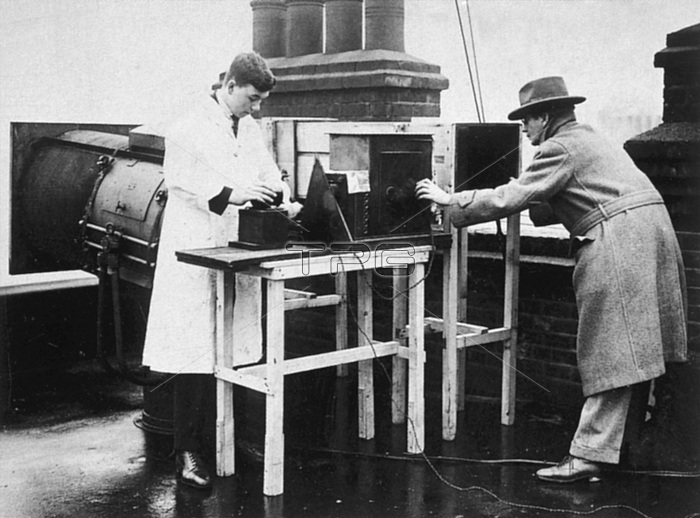
Baird (right), with assistant. John Logie Baird (August 14, 1888 - June 14, 1946) was a Scottish scientist, engineer, innovator and inventor of the world's first television. He built what was to become the world's first working television set using items including an old hatbox and a pair of scissors, some darning needles, a few bicycle light lenses, a used tea chest, sealing wax and glue. In 1925, he successfully transmitted the first television picture with a greyscale image: the head of a ventriloquist's dummy nicknamed "Stooky Bill". Thus many historians credit him with being the first to produce a live, moving, greyscale television image from reflected light. He made many contributions to the field of electronic television after mechanical systems had taken a back seat. In 1939, he showed color television using a cathode ray tube in front of which revolved a disc fitted with color filters. In 1944, he gave the world's first demonstration of a fully electronic color television display. His early technological successes and his role in the practical introduction of broadcast television for home entertainment have earned him a prominent place in television's history. He had a stroke early in 1946 and died several months later at the age of 57.
| px | px | dpi | = | cm | x | cm | = | MB |
Details
Creative#:
TOP22155529
Source:
達志影像
Authorization Type:
RM
Release Information:
須由TPG 完整授權
Model Release:
No
Property Release:
No
Right to Privacy:
No
Same folder images:

 Loading
Loading